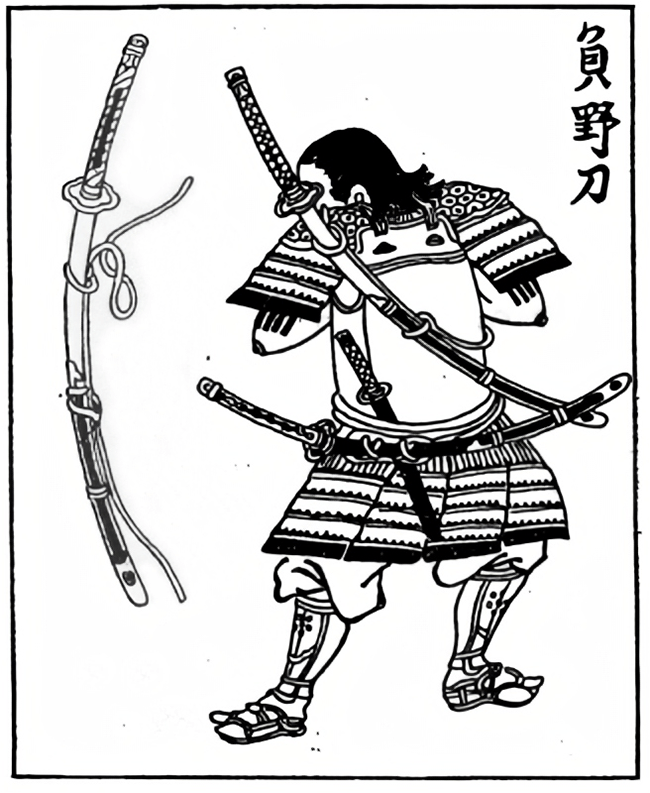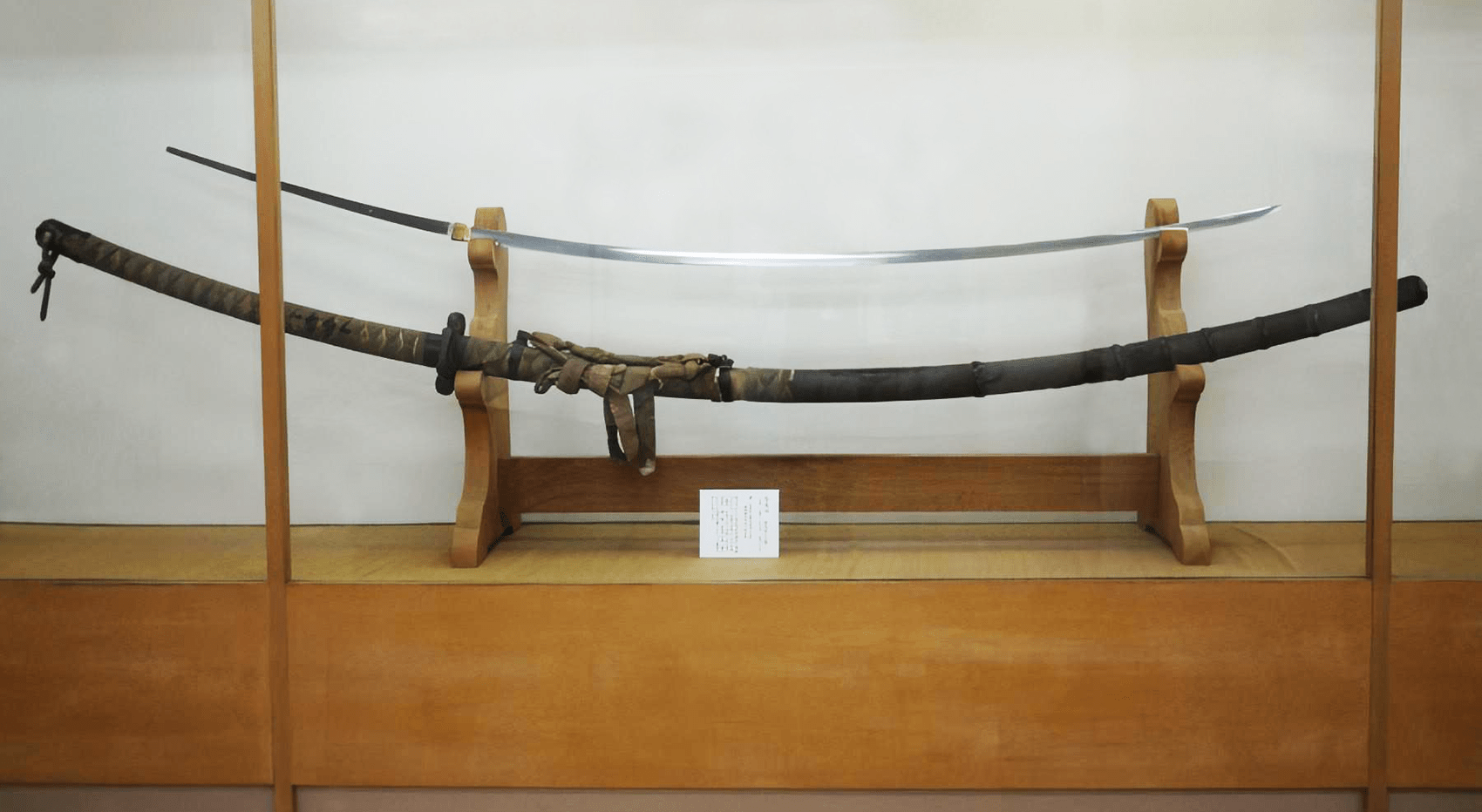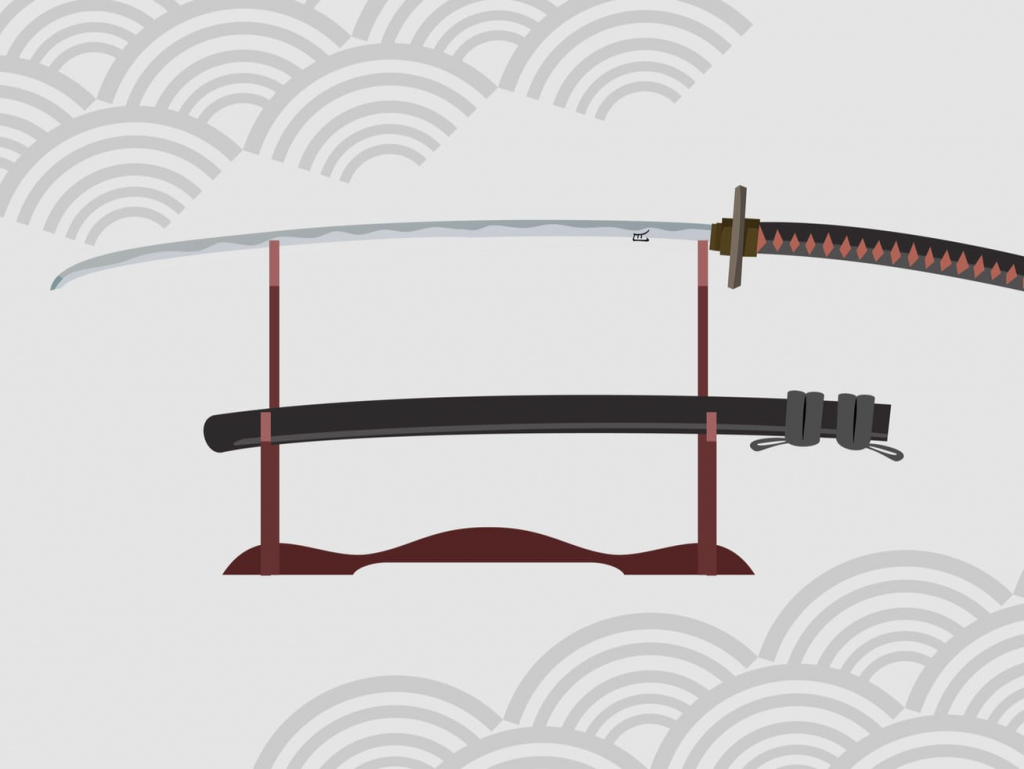Answering whether a thing is real or not should be the easiest thing in the world. Hats? Real. Unicorns? Not real. Apples? Real. But things get a little complicated when it comes to the zanbato sword, a legendary type of Japanese sword said to be so large that it could cut a horse in half. Hence its name, which literally means “horse-slaying sword.” But was it real? Probably not. But also, yes. Just not in the way you think. Like we said, it’s a little complicated.

By Hayakawa Kyuukei – Tanki Yoriaku: Hi Ko Ben ( Japanese book on samurai armor published in 1735), Public Domain, Wikimedia
What’s the Zanbato?
We start with a problem because no one can agree on the exact definition of a “zanbato” sword. Broadly speaking, it was a very big katana. How big exactly? The answer to that seems to be a great big shrug. Complicating things further is the fact that Japan was never that obsessed with specific measurement cut-offs for sword types. The wakizashi short sword, for instance, could be anywhere between 30 and 60cm long. Japanese swords existed on a spectrum but, even then, “big” is a little too broad.
全長206㎝の五尺大太刀の抜刀と納刀を前後から。トレス歓迎です。 pic.twitter.com/S42yVDY07v
— 河崎竜斗@オフィス連珠代表 (@ninjaryugo) September 8, 2021
The zanbato was supposedly also a cavalry sword, used either against mounted troops (to cut the legs off their horses) or by them. Some were reportedly even made impossibly large, nearly 4 meters long, to show off a swordsmith’s skills or as a symbolic offering to the gods. However, there doesn’t seem to be a single historical record mentioning a Japanese “zanbato” being used for any of those things. Case closed? Not even close.
View this post on Instagram
The Chinese Horse-Slaying Sword
The first time zanbato (written 斬馬刀) appears in Japanese sources is in a treatise on Chinese military tactics. In China, they knew exactly what a “zhan ma dao” was. It was a clearly defined category of weapons meant to be used against soldiers on horseback, which included everything from glaives to swords of all kinds. Some of these weapons were also known as “zhan ma jian” (which still means “horse-slaying sword,” with the main difference being that “jian” usually means a double-edged sword) and could sport blades 150 centimeters long.
The most interesting example is the zhan ma dao of the Song Dynasty (960–1279), a large, two-handed straight sword with a blade about one meter long meant for cutting down armored cavalry troops. It was also mass-produced, meaning that it almost definitely reached Japan at one point since the two countries were trading extensively. So far, the only zanbato from historical records is the Japanese reading of the Chinese “zhan ma dao.”
Was there a Japanese swordsmith between the 10th and 13th century who heard tales of a “horse-slaying sword” and tested their skills by trying to make one? Possibly. It’s just that we have no record of that. Case closed? No, this is where things get even more convoluted.
A Horse-Slaying Sword by Any Other Name
During the 14th century, Japan developed a new kind of sword that was like a big katana. Listening to the history of this sword, it sounds pretty much the same as the zanbato i.e., it was used by and against mounted troops and some were made impossibly large to show off a swordsmith’s skills or as a symbolic offering to the gods.
Technically, we’re talking about the odachi, alternatively called the nodachi sword. They’re very much real but are almost a blip in Japan’s sword history. They made infrequent appearances on the battlefield and eventually became more popular as offerings to temples and shrines like the biggest odachi of them all: the Norimitsu Odachi, which measures 377cm in length. You can find it today at the Kibitsu Shrine in Okayama.

A Japanese ukiyo-e of Hiyoshimaru who meets Hachisuka Koroku on Yahabi bridge. Cropped and edited to show an odachi sword hanging on his back. He holds a yari (spear). Source: Public domain, Wikipedia
Was the odachi inspired by the zhan ma dao? Maybe, but that’s another guess. If it were, though, it would make a full circle. This is because the odachi itself actually went back around and inspired a Ming Dynasty-era zhan ma dao sword known as a chang dao (長刀).
We warned you that this whole sword history was complicated. In any case, all instances of Japanese zanbato swords that you can find online are either modern reproductions of something that technically never existed, or someone misidentifying an odachi sword.

By Artanisen – Own work, CC BY-SA 4.0, https://commons.wikimedia.org/w/index.php?curid=104987145
Zanbato Today
The only kind of Japanese zanbato that exists today is the one that doesn’t really exist because it only appears in fiction. The world has seen more than its fair share of anime or Japanese RPG characters with comically large swords. Guts from Berserk, Dracule Mihawk from One Piece, Sagara Sanosuke from Rurouni Kenshin, or Cloud and Sephiroth from Final Fantasy VII come to mind. All their swords are specifically referred to as zanbato even though they are more likely inspired by the odachi.
So why call them all zanbato? We don’t know for sure, but the only thing approaching a real answer is that, in all likelihood, it’s because the name “zanbato” sounds cooler. You’re going to be worried about a guy wielding an odachi (literally meaning “great big sword”) but you’ll be downright terrified of a guy running around with a “horse-slayer” strapped to their back.
Don’t stop at the zanbato. Read more about swords and samurai:









